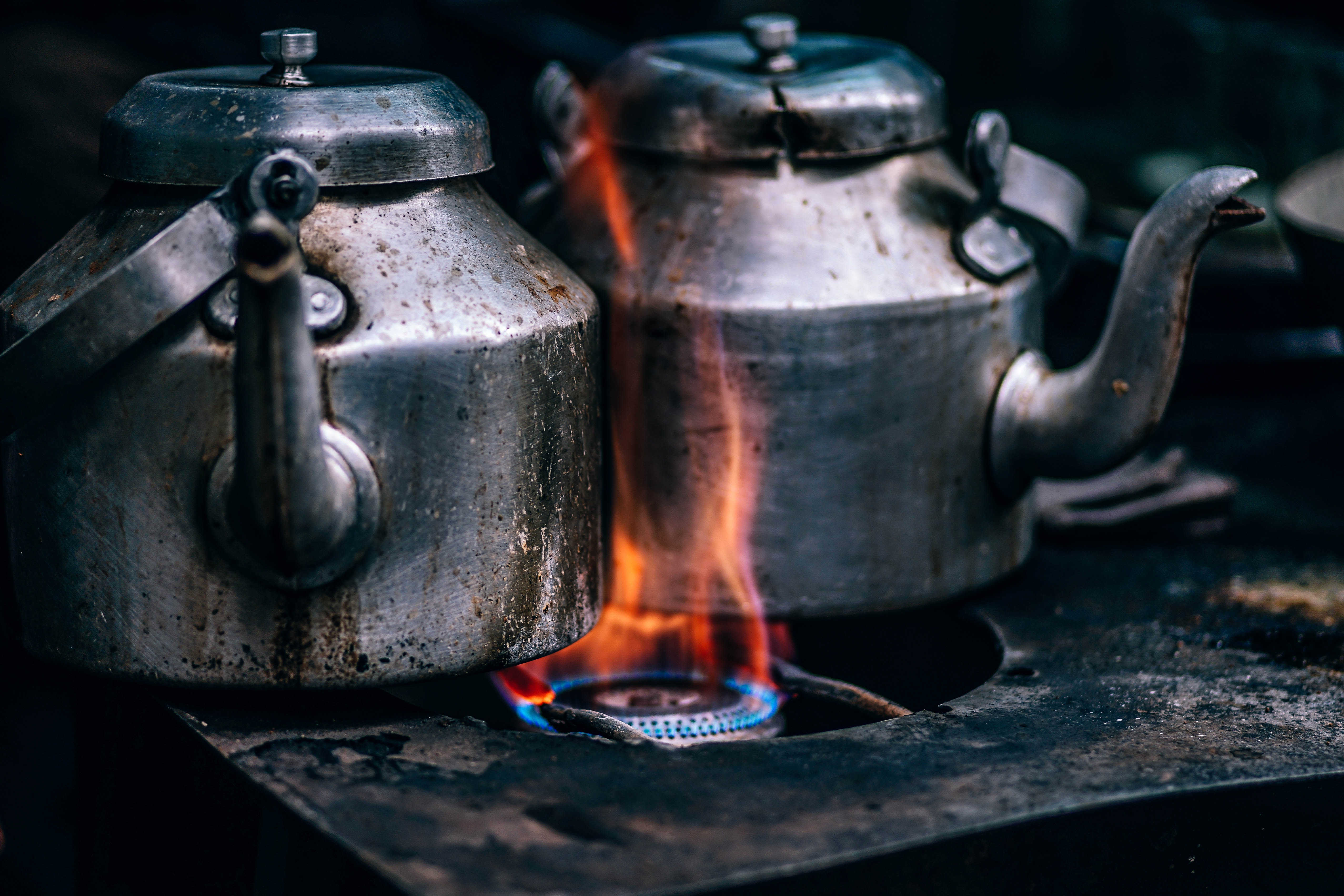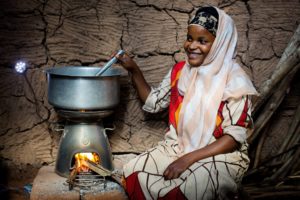Scaling access to clean, safe cooking solutions in developing countries is one of the greatest and most urgent public health challenges of our time. Nearly three billion people still cook on smoky stoves or over open fires and this is leading to almost four million premature deaths every year.
With the spotlight currently focussed on climate change following the publication of the sobering IPCC Special Report: “Global Warming of 1.5°”, it is understandable that the emphasis is on the big issues of energy systems and transport. But this report also gives us an opportunity to highlight how a radical transformation in the way that people cook food can make a vital contribution to lowering carbon emissions and improving lives.
…business as usual is not an option. To make universal clean cooking a reality will require a well-resourced market fuelled by resilient enterprises, strong consumer demand and government policies that support this sector.
The biggest challenge is to push clean cooking up the agenda. As the Global Alliance for Clean Cookstoves has stated: “…business as usual is not an option. To make universal clean cooking a reality will require a well-resourced market fuelled by resilient enterprises, strong consumer demand and government policies that support this sector.”
There is also a time imperative. In the past decade population growth has outstripped progress on this issue according to a recent report from the International Energy Agency. A step-change is needed, with a level of resourcing and collaboration that is previously unprecedented.
Photo Credit: Global Cooking Alliance
There is no one-size-fits-all approach when it comes to clean cooking solutions, however. Stove designs and the type of fuel that powers them are a critical part of the equation but like everywhere else in the world cultural and environmental influences in developing countries mean that cooking is carried out in different ways in different places. In some locations it is done sitting down, in others standing up. Some cultures prefer an open flame, others a hotplate. Cookstoves are also an aspirational purchase and consumer desires need to be met if clean cooking is to be widely adopted.
We have reached a point in the development of cookstoves where change is needed, and quickly. Previously the focus was on dramatically increasing the efficiency of wood and charcoal stoves to reduce the smoke and emissions that cooks were exposed to and the pressures on local forests. We now know from research that the smoke needs to be eliminated almost entirely if users are to gain the full health benefits, and that continued and increasing demand for charcoal is resulting in vast deforestation, which is unsustainable.
Against this backdrop, we need to urgently see the development of a broad range of sustainable technologies supported by financially-viable distribution. They need to be affordable and aspirational to stimulate consumer demand, resulting in widespread adoption that will help to bring about long-term behaviour change. In order to achieve this, we need to see a significant increase in investment in this sector. The Global Alliance for Clean Cookstoves states: “clean cooking enterprises attracted less than US$20 million in debt and equity in 2016. This is a tiny fraction of the billions we know are needed annually to achieve universal access to clean cooking.”
The Ashden Awards have recognised, and worked with, outstanding innovators in the clean cooking field over the past eighteen years, whose solutions have helped to reduce indoor air pollution and emissions, reduced deforestation and, in many cases, brought many additional benefits that help transform the lives of women and their children.
Greenway Grameen in India makes and sells affordable, aspirational and smart cookstoves. These use a “chimney” within the stove, which directs air from the base through burning biomass fuels such as wood, dry dung, crop waste and coconut waste. The stove’s patented air regulation technology leads to better combustion and the use of less fuel, which means that local pollutant emissions are lower. It would have been possible to increase efficiency and lower emissions further by using a top-loading design, but the stove also had to meet the needs and wishes of households and their cooking customs.
The Greenway Smart stove is helping to significantly reduce the amount of time spent cooking and because there is less smoke, users report that they have less eye irritations and coughs. For women, the primary cooks in the region, this is a particular benefit, but in addition, women and girls who collect the wood needed for fuel, are saving a further two or three hours of this laborious, sometimes unsafe, work each week.
Greenway is a good example of how cookstoves that use biomass fuels can bridge the gap between traditional cooking in cookstoves using charcoal and wood and those that use cleaner fuels like biogas, ethanol, LPG and natural gas. Use of these cleaner fuels could eliminate the deforestation impact and the crippling health problems that are associated with traditional cooking. The Greenway stove, however, helps by reducing pressure on local wood resources and figures suggest that it also cuts greenhouse gas emissions by an estimated 1.67 tonnes of CO2 per stove per year while also partially improving the health of its users.
Related Articles:
![]() “BEYOND THE GRID: BRINGING SUSTAINABLE ENERGY TO THE FRONTIER”
“BEYOND THE GRID: BRINGING SUSTAINABLE ENERGY TO THE FRONTIER”
![]() “(EM)POWERING OFF-GRID COMMUNITIES WITH SOLAR LIGHTS”
“(EM)POWERING OFF-GRID COMMUNITIES WITH SOLAR LIGHTS”
by UN Sustainable Development Solutions Network
Ideally, all cookstoves would use cleaner fuels or be significantly more efficient and meet the highest possible air quality guidelines, but, unfortunately, they are currently not often at a price that is affordable to those that need them, nor can they always be accessible to remote communities and it is too early in their development for them to be available at scale. At Ashden we will now be focussing on rewarding and supporting those that are innovating in this clean cooking fuel and highly efficient cookstove space, to help our winners to scale up and raise awareness of the solutions to those with influence to help grow this vitally important sector.
The important message is that technology and business innovation need support if we are to tackle this very important issue successfully. Compared to population growth, the uptake of clean cooking methods is slow at best, and much more needs to be done to help entrepreneurs develop and introduce solutions that are fit for purpose and designed to meet the most stringent air quality recommendations.
Ethiopian NGO, The Gaia Association, is a great example of how this works in practice. We recognised Gaia with an Ashden Award in 2008 for its development of ethanol-fuelled cooking stoves for Somalian refugees. Working with the UNHCR, the main providers of support in the refugee camps and later in compounds, funds were raised to provide the stoves and purchase ethanol from the government. Previously women would scour local woods around the camps for firewood, resulting in widespread deforestation and putting themselves in danger of attack.
The ethanol used in the Gaia stoves is produced from molasses, a by-product of Ethiopia’s large sugar-cane industry, and compared with previous methods of cooking on open fires, produces considerably less particulates and smoke, leading to a reduction in eye and respiratory problems. Over the past ten years, Gaia have further developed their operation, helping hundreds of thousands more refugee women to cook more cleanly and more safely.
In the Photo: An illustration by KopaGas claiming that charcoal, in addition to damaging the health of those who are cooking, is also destructive to the environment. It releases twice as much CO2 as LPG gas and destroys more than 130 thousand hectares of forest every single year in Tanzania. Photo Credit: KopaGas
In sub-Saharan Africa KopaGas, an innovative new start-up, is enabling people to “pay as you cook” by introducing smart gas meters for LPG gas cylinders that connect to cookstoves. A runner-up in this year’s Ashden Awards, KopaGas not only sells small amounts directly to lower income customers and provides installation and support, it also works through LPG cylinder distributors to provide full cylinders to higher income households. The technology is allowing customers to make the switch from expensive, polluting charcoal to LPG, with the attendant health and environmental benefits.
While many of these clean cooking technologies improve conditions for households and lower the time that women spend sourcing fuel and cooking, some solutions go further in empowering women. BURN Manufacturing in East Africa has introduced a stove that represents a step-change in the design and efficiency of charcoal-burning cookstoves. The Jikokoa is an aspirational household product which cuts down on smoke and soot by more than 60 percent compared to the widely used Kenya ceramic jiko, and significantly reduces the time spent cooking and collecting wood. But its not just the women who cook that benefit because BURN, an Ashden Award winner in 2015, manufactures the stoves in a state-of-the-art factory in Kenya where just over half of its workforce are women. This has enabled them to increase their economic independence and improve their position in society and they receive annual leave, sick leave and maternity pay, benefits that are not standard in the region.
Every year we see new advances being made in clean cooking solutions, however, the speed with which these are reaching the market needs to be ramped up. We need a new generation of affordable clean cookstoves and clean cooking fuels, and this requires some new technology and business models and new finance. Use of ethanol, biogas or even LPG are big steps in the right direction and need to be scaled fast, but my dream would be electric cookstoves, powered by solar PV, that are affordable and available for all. This issue will not be solved overnight, and in the meantime, we will need to rely on technology that bridges existing solutions with dream solutions that address health and deforestation.
Championing and rewarding innovations that address these issues is what we are focused on now. We have witnessed at first-hand how the right solutions lift people out of poverty and improve their lives whilst simultaneously cutting emissions and positively impacting climate change. This drives us on to campaign for more. More private and public investment in research and development, businesses with ideas, more support for entrepreneurs, better alignment between government agencies and more policies designed to support sustainable energy initiatives. We have to wake up. Three billion people’s lives are at risk, the planet is at risk, and it is within our collective power to do something about it, now.












